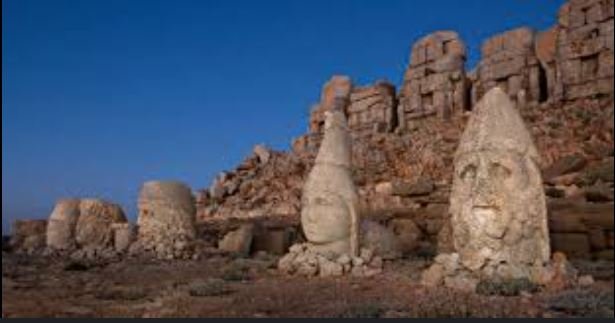Exploring Malatya’s ancient sites offers a captivating journey through the layers of history that have shaped this eastern Turkish city. Renowned for its rich archaeological heritage, Malatya boasts a plethora of ancient sites that reveal the stories of the civilizations that once thrived here. This exploration looks into some of Malatya’s most significant ancient sites, highlighting their historical importance and the insights they provide into the region’s past.

Arslantepe Mound
Arslantepe Mound, one of Malatya’s most important archaeological sites, offers a window into the region’s ancient history. Dating back to the 6th millennium BCE, Arslantepe was an early urban center and the site of a significant Hittite administrative palace. Excavations have uncovered well-preserved structures, including temples, palaces, and residential buildings, which provide valuable insights into the political and social organization of early civilizations. The site’s artifacts, such as pottery, tools, and intricate wall paintings, reflect the sophisticated craftsmanship and cultural practices of the time.
Melid (Melitea)
Melid, also known as Melitea, was a prominent city during the Hittite and Neo-Hittite periods. Located near modern-day Malatya, Melid was an important administrative and religious center. The city’s ruins, including monumental gates and basalt statues, showcase the impressive architectural and artistic achievements of the Hittite civilization. Melid’s strategic location along ancient trade routes further underscores its historical significance. Exploring Melid allows visitors to appreciate the grandeur and complexity of one of the region’s earliest urban centers.
Roman and Byzantine Ruins
Malatya’s significance continued during the Roman and Byzantine periods, as evidenced by the numerous ruins scattered throughout the region. The ancient city of Melitene, the Roman name for Malatya, was a key military outpost and trade hub. Visitors can explore remnants of Roman baths, bridges, and fortifications that highlight the city’s strategic importance. Byzantine churches and mosaics further illustrate Malatya’s role as a cultural and religious center during this era. These ruins offer a glimpse into the city’s dynamic history and its adaptation to changing empires and influences.
Aslantepe Open-Air Museum
The Aslantepe Open-Air Museum provides an immersive experience for those interested in Malatya’s ancient heritage. This site preserves and showcases some of the most remarkable finds from the Arslantepe Mound excavations. Visitors can walk through reconstructed buildings and view artifacts in situ, gaining a deeper understanding of the site’s historical context. The museum also offers informative displays and guided tours that enhance the exploration of Malatya’s ancient past. It serves as a bridge between the ancient and modern worlds, highlighting the continuity of human civilization in the region.
Battalgazi (Old Malatya)
Battalgazi, also known as Old Malatya, is another significant site that reflects the city’s rich historical tapestry. Founded during the Roman era and flourishing under the Byzantines, Battalgazi boasts several well-preserved ancient structures. Key highlights include the grand Ulu Mosque, originally a Byzantine church, and the ancient city walls that have withstood the test of time. Strolling through Battalgazi offers a unique opportunity to connect with the layers of history that have shaped Malatya over the centuries. The town’s blend of ancient ruins and traditional Turkish architecture creates a unique and captivating atmosphere.
Hittite Rock Reliefs
The Hittite rock reliefs scattered around Malatya are among the most intriguing ancient sites in the region. These carvings, often depicting gods, kings, and mythological scenes, provide a glimpse into the religious and cultural life of the Hittite civilization. The reliefs’ intricate details and their strategic placement in natural rock formations highlight the Hittites’ artistic skills and their reverence for the natural landscape. Exploring these rock reliefs allows visitors to appreciate the spiritual and artistic heritage of the ancient inhabitants of Malatya.
Conclusion
Exploring Malatya’s ancient sites is a journey through time, revealing the rich tapestry of civilizations that have left their mark on this historic city. From the early urban center of Arslantepe to the Hittite, Roman, Byzantine, and Islamic influences, Malatya’s archaeological heritage is both diverse and profound. By preserving and promoting these ancient sites, Malatya not only honors its past but also offers visitors a unique and enriching experience. The ancient sites of Malatya stand as a testament to the city’s enduring legacy and its role in the broader narrative of human history.

